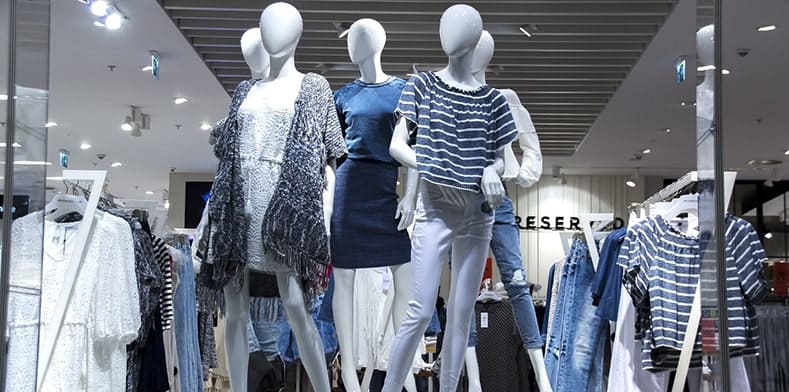The appeal of brick-and-mortar stores goes far beyond the convenience of buying something and taking it home the same day – which you can’t always do with online shopping. In-store experiences are brought to life by the inventory and the associates that work within those environments, yet it’s often the displays and merchandising that truly capture customer attention.
In fact, think back to a recent experience you had in a store that motivated you to want to buy something. Was it due to the inventory itself? The people working there? Or how the store was presented? Often, customers are inclined to buy simply due to the physical experience of the store space they are in. This is brought to life through window displays and in-store merchandising strategies at every twist and turn that the customer makes.
To help your store excel in dynamic displays that encourage sales and strong customer experiences, consider the following three tips.
Tip #1: Create Displays That Encourage Hands-On Experiences
An astounding 94% of retail sales are still credited to brick-and-mortar stores. To be among those capturing these dollars, it’s important to consider how your store delivers on in-store, hands on experiences for customers.
To help, create displays that encourage your customers to touch and get engaged with your inventory. Begin this process by evaluating what inventory you sell that would benefit customers to get to “know it better” through a hands-on experience. Possibly it’s a kitchen gadget that when taken out of its box, customers are better able to understand. Or maybe it’s a child’s toy that has interactive features and will sell more easily when able to be played with and thus, customers will more quickly get excited about it and want to buy it.
Clothing, accessories and other wearable items all should be encouraged to try on – but this is not always the case if stores don’t make it easy for customers. Have mirrors accessible for your guests, introduce signage that tells customers to touch and get engaged with your inventory and create display stations that provoke your customers to get interactive with your inventory.
The key here is simple, really. Through displays, let your inventory shine and become accessible for customers to interact with. As a result, you will be more inclined to sell more inventory.
Tip #2: Use Your Storefront Windows to “Speak” With Customers
Without knowing your store firsthand, potential customers who walk by it may never walk inside it unless they are given a specific reason to. Keeping this in mind, let your windows do the talking when it comes to communicating with customers.
Through window displays, your store can deliver messages to customers through merchandising tactics that include themed displays such as seasonal, festive, national or global holidays, as well as locally-minded merchandising strategies that may include a partnership with a local high school or other organization.
Introducing signage to these displays, as well, can help share any specific messages you want to offer. This can identify promotional details of what’s happening in your store – such as an end-of-season sale – or an upcoming event you may be hosting.
The catch? It’s important to change your window displays often since local foot traffic tends to walk by businesses repeatedly. If one window display doesn’t capture their attention, another might. Weekly changes are ideal, but bi-weekly should be the maximum amount of time you go without making a change.
Tip #3: Leverage Signage to Increase Store Sales
Whether it’s subtle or bold, the idea of signage in general is to be able to “speak” to your customers without having to directly speak with them. Through signage, you can share details of upcoming store events, existing inventory sales, return policies, gift card availability and more.
Be sure that your signage is consistent and complementary to your store branding, as well as making sure that you create signage that is professional and polished in appearance versus last minute, handwritten signage that too many retailers reluctantly tend to do.
Final Thoughts
Finally, remember that in-store experiences are all about engaging customers while introducing them to inventory they either know they need or your store will make them want. Through displays, you can entice customers and increase sales – better positioning your store for long-term success. When displays become a strategy in your business efforts, your sales will not only benefit but your overall store experience will heighten, as well.




